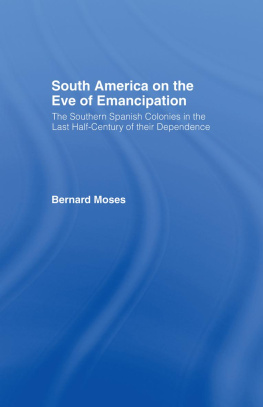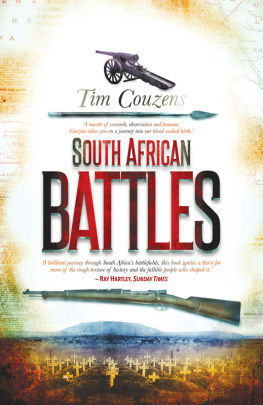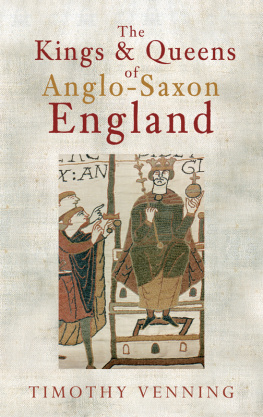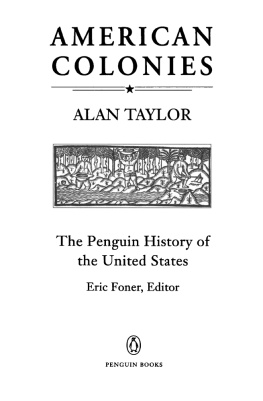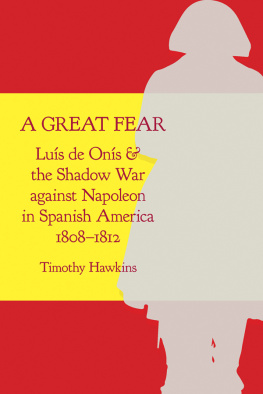
ANGLO-SPANISH RIVALRY IN COLONIAL SOUTH-EAST AMERICA, 16501725
EMPIRES IN PERSPECTIVE
Series Editors: | Tony Ballantyne |
Duncan Bell |
Francisco Bethencourt |
Caroline Elkins |
Durba Ghosh |
Advisory Editor: | Masaie Matsumura |
TITLES IN THIS SERIES
1 Between Empire and Revolution: A Life of Sidney Bunting, 18731936
Allison Drew
2 A Wider Patriotism: Alfred Milner and the British Empire
J. Lee Thompson
3 Missionary Education and Empire in Late Colonial India, 18601920
Hayden J. A. Bellenoit
4 Transoceanic Radical, William Duane: National Identity and Empire, 17601835
Nigel Little
5 Natural Science and the Origins of the British Empire
Sarah Irving
6 Empire of Political Thought: Indigenous Australians and the Language of Colonial Government
Bruce Buchan
7 The English Empire in America, 16021658: Beyond Jamestown
L. H. Roper
8 India in the French Imagination: Peripheral Voices, 17541815
Kate Marsh
9 British Narratives of Exploration: Case Studies on the Self and Other
Frederic Regard (ed.)
10 Law and Imperialism: Criminality and Constitution in Colonial India and Victorian England
Preeti Nijhar
11 Slaveholders in Jamaica: Colonial Society and Culture during the Era of Abolition
Christer Petley
12 Australian Between Empires: The Life of Percy Spender
David Lowe
13 The Theatre of Empire: Frontier Performances in America, 17501860
Douglas S. Harvey
FORTHCOMING TITLES
Royal Patronage, Power and Aesthetics in Princely India
Angma Dey Jhala
ANGLO-SPANISH RIVALRY IN COLONIAL SOUTH-EAST AMERICA, 16501725
BY
Timothy Paul Grady
First published 2010 by Pickering & Chatto (publishers) Limited
Published 2016 by Routledge
2 Park Square, Milton Park, Abingdon, Oxon OX14 4RN
711 Third Avenue, New York, NY 10017, USA
Routledge is an imprint of the Taylor & Francis Group, an informa business
Taylor & Francis 2010
Timothy Paul Grady 2010
All rights reserved, including those of translation into foreign languages. No part of this book may be reprinted or reproduced or utilised in any form or by any electronic, mechanical, or other means, now known or hereafter invented, including photocopying and recording, or in any information storage or retrieval system, without permission in writing from the publishers.
Notice:
Product or corporate names may be trademarks or registered trademarks, and are used only for identification and explanation without intent to infringe.
BRITISH LIBRARY CATALOGUING IN PUBLICATION DATA
Grady, Timothy P.
Anglo-Spanish rivalry in colonial southeast America, 16501725. (Empires in perspective)
1. North Carolina History Colonial period, ca. 16001775. 2. South Carolina History Colonial period, ca. 16001775. 3. Florida History Spanish colony, 15651763. 4. Indians of North America Colonization Florida History 17th century. 5. Indians of North America Colonization North Carolina History 17th century. 6. Indians of North America Colonization South Carolina History 17th century. 7. Great Britain Foreign relations Spain. 8. Spain Foreign relations Great Britain. 9. Great Britain Foreign relations 16601714. 10. Spain Foreign relations 16651700.
I. Title II. Series
975.602-dc22
ISBN-13: 978-1-84893-040-7 (hbk)
Typeset by Pickering & Chatto (Publishers) Limited
CONTENTS
I have many more people that I would like to acknowledge for their guidance, advice and help than is possible in such a short space. But several people have been invaluable in the completion of this project and especially deserve to receive my thanks in front of all.
I would first like to thank James Axtell and Kris Lane, both of the Department of History at the College of William & Mary. Through all of my time there and in the process of completing the dissertation on which this book is largely based, both of these gentlemen showed me what a true mentor should be. They guided, taught and, at times, pushed me to be better and provided the inspiration I needed to keep going throughout.
I would like to express my heartfelt appreciation to the staffs of the South Carolina Department of Archives and History, the Earl Gregg Swem Library at the College of William & Mary and the P. K. Yonge Library of Florida History for their help and guidance in locating and accessing many of the records used in this project. Most especially, I would like to single out James Cusick, the curator of the P. K. Yonge Library, and the Interlibrary Loan Department at Swem Library for special thanks for their logistical assistance in obtaining sources without which this project would have been impossible.
I also would like to thank Dwight Lambert, my friend, colleague and department chair who volunteered (at my great insistence) to help me by reading and commenting on the original manuscript.
Finally, I want to thank my parents, Pat and Spence Farley, and my wonderful wife, Claudia, for reading every single draft and version of this book at every stage of the process and for giving me their love and support the whole time.
In 1565 the Spanish established a colony in Florida at St Augustine to protect their more valuable colonies in the Caribbean and South America from any potential European rivals. After the destruction of a French outpost, Florida served the Spanish primarily as a military buffer between the Spanish Americas and other European colonies to the north. In addition, it acted as an important defensive bastion protecting the treasure fleets bearing the riches of the Americas to Spain. Because the Spanish population in Florida remained small, the extension of Spanish influence in the region was accomplished primarily through a chain of Franciscan missions. At their height, these missions encompassed tens of thousands of Indian converts and extended from the coastal islands of modern Georgia to the coast of the Gulf of Mexico. From its beginnings in 1565 through the first decades of the seventeenth century, the Spanish stubbornly maintained their presence in the south-east and Spanish missionaries, soldiers and traders ranging across Florida from St Augustine exercised enormous influence among the natives.
During the first decade of the seventeenth century England repeatedly began to defy Spains claim to the region. The Spanish in St Augustine took careful note of the English efforts at Roanoke in the 1580s and the 1607 establishment of the colony at Jamestown. During the course of the seventeenth century, officials in Florida warned of a growing English presence in the areas to the north of St Augustine and the English openly sought to confront and possibly supplant the Spanish. When seen in retrospect, therefore, the founding of Charleston in 1670 seems to be the obvious end to Spanish dominance in the region. After all, traditional historical views of early modern Europe at this time stress the decline of Spanish power in the seventeenth century in favour of growing English and French influence. Spain might see a brief resurgence and restructuring after the succession to the throne of Philip V but its power would never again equal its golden age of the sixteenth century.




